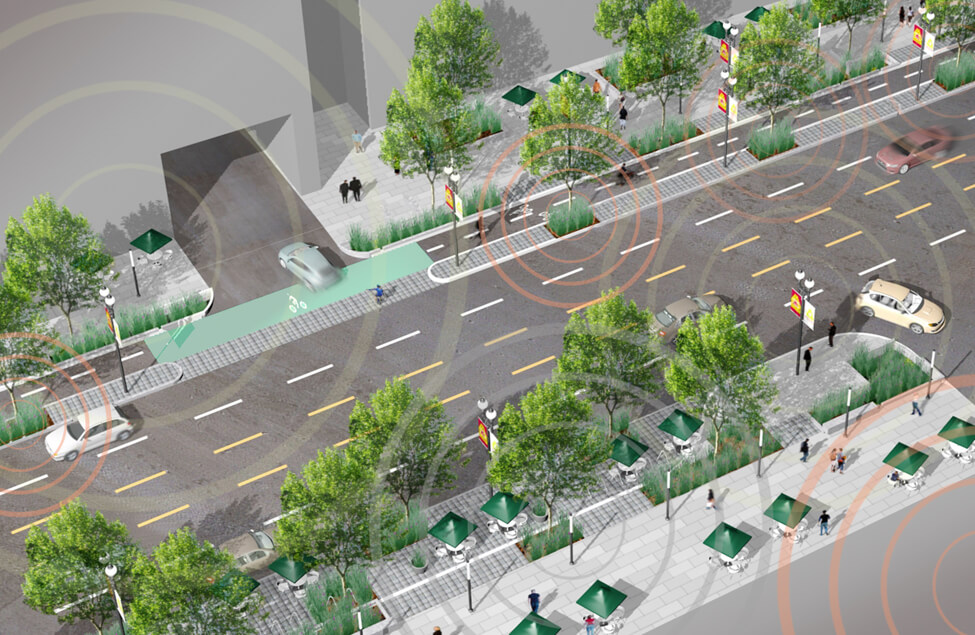
- By Ken Walton
- January 30, 2018
Smart Cities and NCPC
How can we incorporate smart city technologies in to our work? At the January 2018 Commission meeting, Architect and Urban Planner Ken Walton described some of the agency’s recent efforts on smart cities. Here he highlights some of that work, which includes an ongoing effort to turn Pennsylvania Avenue west of the White House into a smart and connected corridor.
What is a Smart City?
Making a city a “smart city” can mean many things, but at NCPC, we think about it as a process of incorporating technology into the cityscape to provide residents and tourists with a better experience.
Examples of smart city technology include sensors installed on street furniture, such as light poles, or infrastructure that could provide free Wi-Fi, information about parking availability, or required maintenance, such as when a trash can needs to be emptied. Sensors on underground utilities could detect leaks and immediately inform the service provider. Mobile phone apps could offer people new ways to interact with the city, including providing information about local sights and history, restaurants and shops, and transportation options.
Recently, NCPC has been involved in the research of smart cities through the Global City Teams Challenge (GCTC), a smart cities initiative led by the National Institute of Standards and Technology. The GCTC is a four-year‐long challenge designed to help global communities work together by using smart cities solutions to address issues ranging from air quality and traffic management to city services and visitor experience. NCPC, the DC Office of the Chief Technology Officer, the Golden Triangle Business Improvement District (BID), George Washington University, and Cisco Systems are currently collaborating on the Pennsylvania Avenue 2040 (PA 2040) Smart and Connected Corridor project.
PA 2040
The PA 2040 Smart and Connected Corridor project focuses on Pennsylvania Avenue west of the White House to New Hampshire Avenue, NW, and the area stretching north to I Street and south to G Street, NW. The project seeks to use this corridor as a testing ground to evaluate smart city technologies. To date, pilot projects include an outdoor Wi-Fi network and sensor-based LED streetlights that turn on when it gets dark or when a pedestrian is nearby. Planned additions include environmental sensors that measure harmful gasses, such as ozone and carbon monoxide, and cameras mounted on streetlights that can detect when parking spaces are unoccupied and report them to a mobile phone application. The PA 2040 team will evaluate these projects to determine whether they met community needs, and if they should be deployed citywide.
Takeaways
Implementing smart city solutions can affect each PA 2040 partner’s work in different ways. For example, the Golden Triangle BID may be interested in how the pilot projects can help them more efficiently maintain their neighborhood.
At NCPC, we’re interested in how smart city technology can improve visitors’ experience in our nation’s capital, including new ideas for commemoration and interpretation. Mixed reality monuments and memorials, such as those proposed in the 2016 Memorials for the Future ideas competition, immersive visitor experiences, artificially intelligent park rangers, and interactive infrastructure are all possible as smart cities take shape. NCPC staff will continue to monitor smart city developments and look for ways to integrate them through our long-range planning and policy work.
PA 2040 Project Page
Memorials for the Future
Video Presentation


